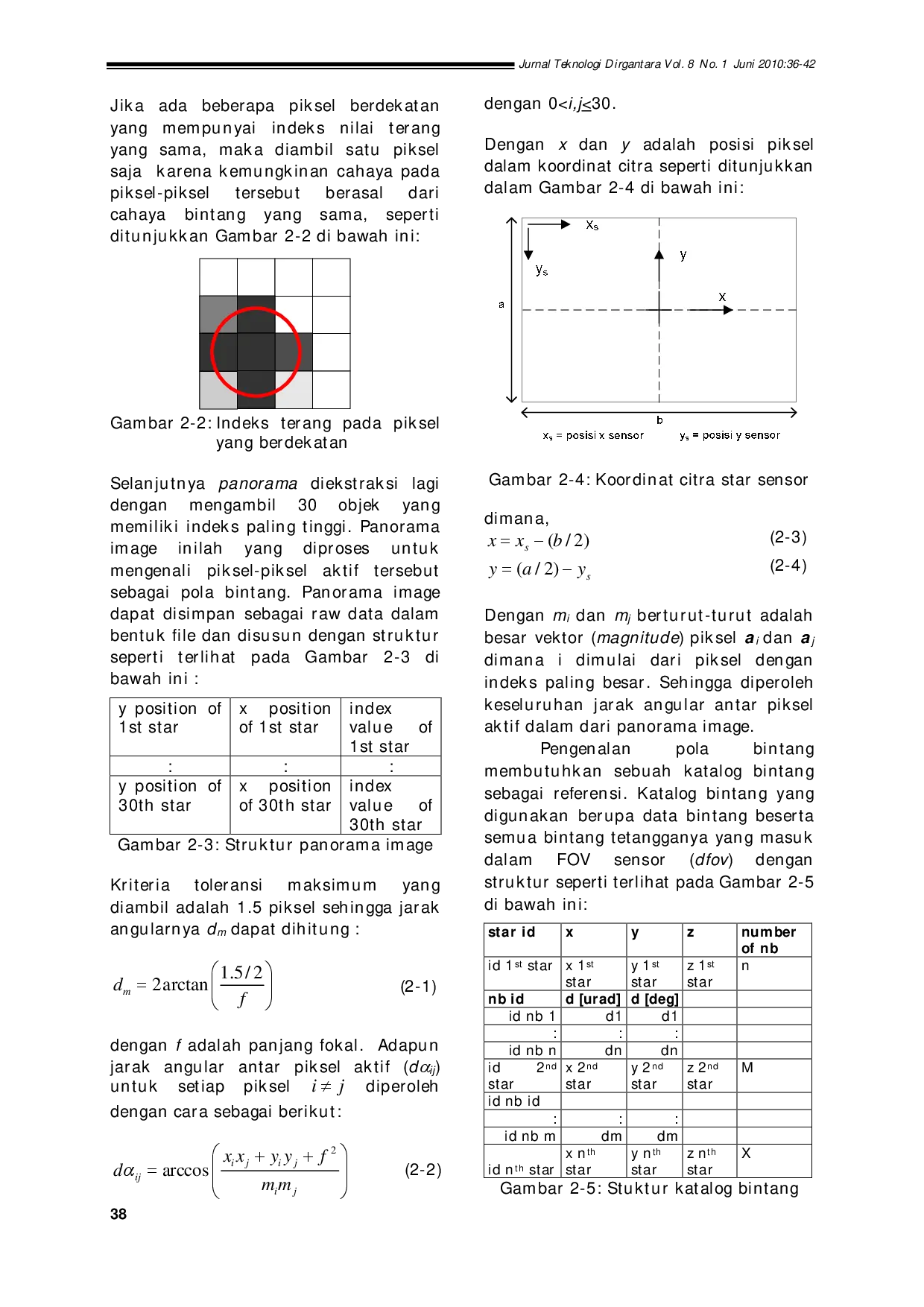LAPANLAPAN
Jurnal Teknologi DirgantaraJurnal Teknologi DirgantaraThe RX-450 rocket, developed by the Rocket Technology Center BRIN, serves various purposes, from sounding to military applications. This study focuses on estimating rocket velocity during the launch phase. Using MATLAB for image processing and OpenRocket for simulation, we explore the potential of image processing for velocity estimation, providing a cost-effective alternative. Results show velocity estimations trailing those of OpenRocket, attributed to friction force and setup differences. The study emphasizes the importance of camera positioning for accuracy. Despite differences, image processing shows promise, warranting further refinement.
This study demonstrated the potential of image processing methods for estimating rocket velocity during the launch phase, offering a cost-effective alternative.The results show a similar trend to simulations by OpenRocket, with differences attributed to setup variations and friction forces.The image processing approach has the potential to be further developed, but accuracy is influenced by factors such as camera orientation, calibration, and position.Future research should prioritize refining these aspects and developing improved filter methods to enhance the accuracy and reliability of velocity estimation through image processing.
Further research should investigate the use of stereo cameras to improve the accuracy of velocity estimation, addressing the limitations of single-camera setups. Additionally, exploring automated marker identification methods, such as utilizing the exhaust plume, could streamline the image processing workflow and reduce reliance on manual intervention. Finally, a comprehensive study on the impact of camera calibration and orientation on velocity estimation accuracy is needed, potentially incorporating machine learning techniques to optimize these parameters and develop a more robust and reliable system for rocket velocity measurement during launch, ultimately contributing to improved flight performance analysis and control.
| File size | 495.62 KB |
| Pages | 8 |
| DMCA | ReportReport |
Related /
E JOURNALLPPMUNSAE JOURNALLPPMUNSA Usaha home industry Tempe Rahayu menunjukkan keberlangsungan yang kuat berkat kombinasi faktor internal seperti modal usaha pribadi yang stabil, keterampilanUsaha home industry Tempe Rahayu menunjukkan keberlangsungan yang kuat berkat kombinasi faktor internal seperti modal usaha pribadi yang stabil, keterampilan
LAPANLAPAN The out-of-plane strength, including compression and tensile properties, is a critical aspect of honeycomb structures. Despite some experimental and numericalThe out-of-plane strength, including compression and tensile properties, is a critical aspect of honeycomb structures. Despite some experimental and numerical
LAPANLAPAN Untuk alasan ini, sistem peringatan tsunami perlu didukung oleh teknologi deteksi yang cepat. Dalam beberapa tahun terakhir, radar telah diterapkan sebagaiUntuk alasan ini, sistem peringatan tsunami perlu didukung oleh teknologi deteksi yang cepat. Dalam beberapa tahun terakhir, radar telah diterapkan sebagai
LAPANLAPAN Hasil pengujian menunjukkan bahwa akurasi dari teknik tersebut cukup baik, yaitu di bawah 1 arc min sesuai dengan nilai maksimum akurasi star sensor. AlgoritmaHasil pengujian menunjukkan bahwa akurasi dari teknik tersebut cukup baik, yaitu di bawah 1 arc min sesuai dengan nilai maksimum akurasi star sensor. Algoritma
Useful /
LIFESCIFILIFESCIFI Penelitian ini secara sistematis mengkaji dampak analitik big data, kecerdasan buatan (AI), blockchain, dan komputasi awan pada strategi mitigasi risiko.Penelitian ini secara sistematis mengkaji dampak analitik big data, kecerdasan buatan (AI), blockchain, dan komputasi awan pada strategi mitigasi risiko.
IAIN LANGSAIAIN LANGSA Maqāṣid al-sharīʿah menawarkan landasan normatif dan etis yang sangat adaptif terhadap perubahan teknologi dan masyarakat, selaras dengan perhatianMaqāṣid al-sharīʿah menawarkan landasan normatif dan etis yang sangat adaptif terhadap perubahan teknologi dan masyarakat, selaras dengan perhatian
ULUMUNAULUMUNA Ulama ini cenderung memahami bida dari perspektif hukum Islam daripada teologi. Menurut hukum Islam, tindakan manusia jatuh ke dalam lima kategori hukum:Ulama ini cenderung memahami bida dari perspektif hukum Islam daripada teologi. Menurut hukum Islam, tindakan manusia jatuh ke dalam lima kategori hukum:
LAPANLAPAN Data yang digunakan sebagai masukan simulasi ini adalah data kecepatan dan arah angin hasil pengamatan langsung di Oelbukbuk, peta vektor Kabupaten TTSData yang digunakan sebagai masukan simulasi ini adalah data kecepatan dan arah angin hasil pengamatan langsung di Oelbukbuk, peta vektor Kabupaten TTS







